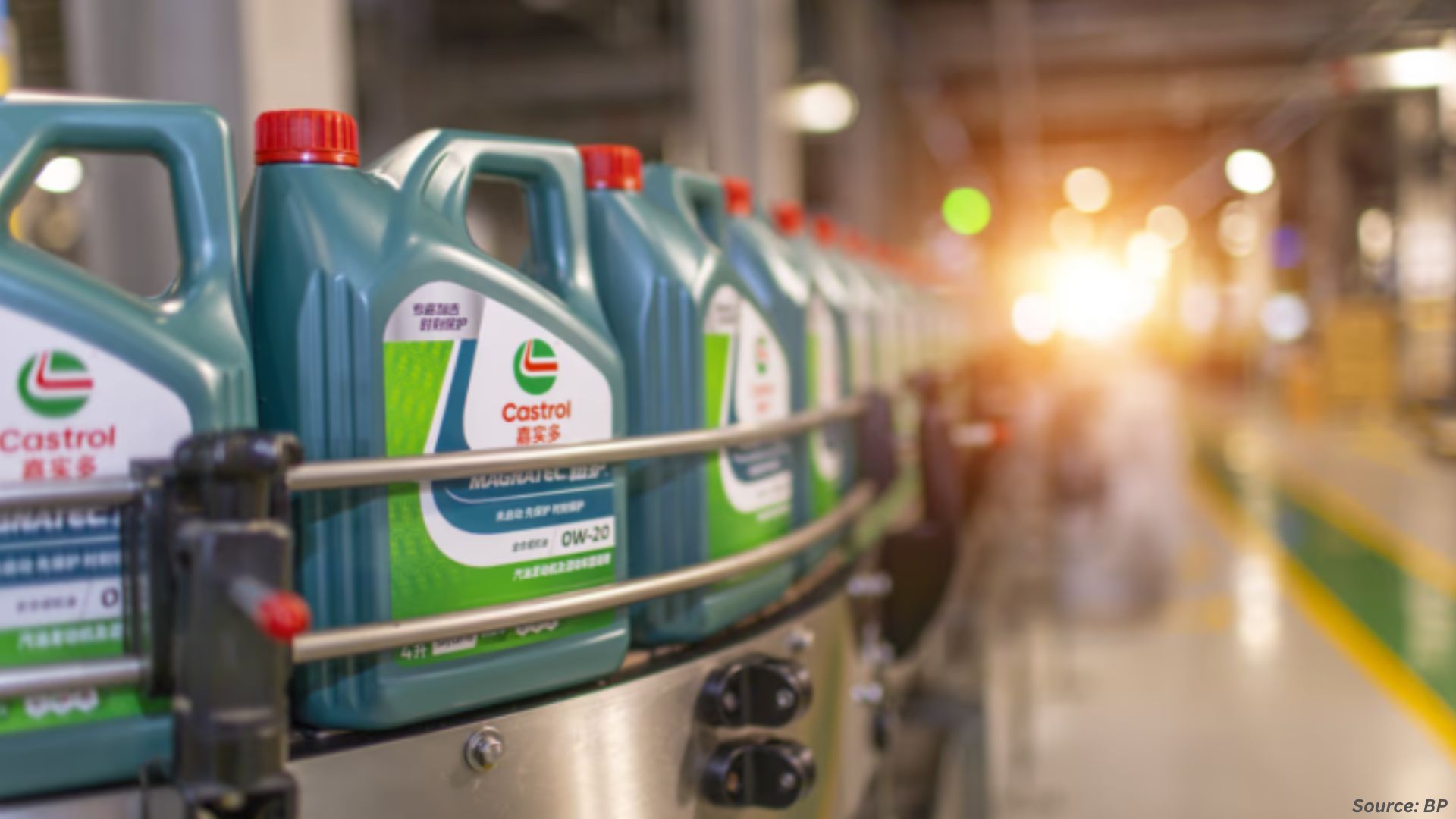
Surfactants Market by Ionic Type (Anionic, Nonionic, Cationic, Amphoteric/Zwitterionic, Polymeric, Silicone-based, Fluorinated, Others), by Chemical (FAE, AS, LAS, AE, Sulfonates, Phosphate Esters, Amino Acid-based, Oleochemical, Ethoxylated/Propoxylated, Biobased, Others), by Raw Material Origin, Form, Function, Regulatory Grade, Substitutability, Production Technology, Packaging, Performance, Distribution Channel, and Others – Global Opportunity Analysis and Industry Forecast, 2025–2030
Industry Outlook
The global Surfactants Market size was valued at USD 49.78 billion in 2024 and is estimated to reach USD 52.44 billion in 2025 and is predicted to reach USD 68.05 billion by 2030 with a CAGR of 5.35% from 2025-2030.
The surfactants market is driven by rising demand for personal care products, increasing in growth of the textile industry and growing food and beverage industry. Environmental impact associated with conventional chemical surfactants however are emerging as growth inhibiting factors in the market. Market leaders including Kao Corporation, Stepan Company and others are also focusing on innovation and strategic collaborations to lead the market. Apart from that the introduction of bio based and sustainable surface-active agents are one of the best future prospects for the market.
Increasing Demand for Personal Care Products Drive the Surfactants Market Trends
The rising demand for personal care products with increasing consumer awareness for hygiene and grooming is driving market growth. Surface active agents in skincare product help to cleanse, combine ingredients, enhance product texture and improve overall skin feel and efficacy. For instance, in June 2024 Kaffe Bueno launched a new line of upcycled anionic surfactants beauty products made from consumed coffee grounds. The company collects used coffee grounds from cafes and breweries and then extracts beneficial compounds such as antioxidants and fatty acids to incorporate into skin care and hair formulations. Thus, such improvements in the surfactant solutions to meet the increasing demand of the consumers for ecofriendly and biodegradable options boosting the market growth.
Surge in Growth of the Textile Industry Accelerates the Surfactants Market Demand
The surge in growth of the textile industry accelerates the demand for surfactants that are essential in enhancing the efficiency and effectiveness of manufacturing operations, further driving the growth of the market. These chemical solutions are important in various applications, including scouring, bleaching, dyeing, and others, that are integral to numerous industrial processes.
According to a report by the Textile Exchange published in December 2023, the worldwide fibre production increased from 112 million tons in 2021 to 116 million tons in 2022 and is expected to reach 147 million tons by 2030. This growing demand highlights the importance of surface-active agent in enhancing the efficiency and effectiveness of manufacturing operations across multiple industries, thereby driving the growth of the market.
Growing Food and Beverage Industry Fuels the Market’s Growth
The rise in growth of the food and beverage industry raises the demands for surfactants that are essential for maintaining hygiene and ensuring the quality of food products, thereby fueling the surfactants market growth. According to latest report of the National Restaurant Association, the foodservice industry is forecast to reach USD 1 trillion sales by 2024. Therefore, the increasing use of surface-active agent in the food and beverage industry for ensuring hygiene standards and enhancing the product quality, drives the market growth.
Environmental Impact Associated with Conventional Chemical Surfactants Hinders Market Growth
The environmental impact of conventional chemical surfactants is a key restraint in the market. When released into water bodies, these surfactants cause water pollution, disrupt aquatic ecosystems, and contribute to bioaccumulation of toxic substances. Non-biodegradable and high-foaming surfactants increase oxygen depletion in water, adversely affecting flora and fauna. Increasing regulatory pressure on the discharge of harmful surfactants and growing consumer preference for eco-friendly and biodegradable alternatives further limit the adoption of conventional chemical surfactants, thereby restraining overall market growth.
Introduction of Bio-Based and Sustainable Surfactants is Expected to Create Ample Future Opportunities
The introduction and growing adoption of bio-based and sustainable surfactants is expected to create significant growth opportunities in the surfactants market. Derived from renewable resources such as plant oils, sugars, and amino acids, these eco-friendly surfactants reduce environmental impact by being biodegradable and less toxic to aquatic life.
The shift toward greener solutions is driven not only by stringent regulatory requirements and environmental policies but also by increasing consumer preference for sustainable products. This trend encourages manufacturers to invest in research and development, innovate new formulations, and expand applications across personal care, household, industrial, and agricultural segments, thereby accelerating market growth.
Market Segmentation and Scope of Study
The surfactants market report is divided on the basis of surfactant type, chemical family, raw material origin, form, function, regulatory grade, substitutability, production technology, packaging, performance conditions, distribution channel, end-use applications and region. On the basis of surfactant type, the market is segmented into anionic, nonionic, cationic, amphoteric/zwitterionic, polymeric, silicone-based, fluorinated, and others. On the basis of applications, the market is categorized into home care & household detergents, personal care & cosmetics, industrial & institutional cleaning, agriculture, oil & gas, textile & leather, paints, coatings & inks, paper & pulp, mining & metal processing, construction, food & beverage, pharmaceuticals & healthcare, electronics & semiconductor, and automotive. Regional breakdown and analysis of each of the aforesaid segments includes regions comprising of North America, Europe, Asia-Pacific, and RoW.
Geographical Analysis
North America accounts for a substantial share of the surfactants market, driven by strong demand in household detergents, industrial cleaning, and personal care. The U.S. leads with advanced R&D capabilities, widespread adoption of bio-based emulsifiers, and a robust presence of multinational producers. Stringent environmental standards are also accelerating the transition toward sustainable surfactants.
Europe represents a mature and regulated market, with growth supported by the demand for biodegradable and eco-friendly products. Germany, France, and the U.K. are key contributors, driven by industrial cleaning, cosmetics, and specialty chemicals. The region also hosts major global surfactant producers such as BASF, Clariant, and Croda, consolidating its leadership in specialty dispersing agents.
Asia-Pacific is the fastest-growing region, led by China, India, and Japan. Increasing urbanization, rising disposable incomes, and expanding personal care, textile, and agricultural sectors are driving demand. China dominates as the largest producer and consumer of surfactants, while India is emerging as a strong hub for both commodity and bio-based surfactants, supported by local manufacturers.
The Rest of the World, comprising Latin America, the Middle East, and Africa, shows steady growth in the surfactants market. Latin America, led by Brazil and Mexico, benefits from high demand in agrochemicals, household detergents, and personal care. The Middle East & Africa region sees rising consumption from oil & gas, construction, and household applications, with GCC countries advancing industrial cleaning demand, while Africa records strong growth in affordable detergent and agricultural formulations.
Strategic Analysis of Key Players
Key players in the surfactants industry are driving growth through sustainable product launches, large-scale biosurfactant production facilities, and strategic collaborations to expand their global manufacturing footprint.
-
In March 2025, Galaxy Surfactants Ltd. announced a strategic collaboration to build an international Performance surfactants and Specialty Ingredients plant via EPC services, boosting its global manufacturing footprint.
-
In September 2024, Evonik Launched TEGO Wet 570 Terra and TEGO Wet 580 Terra, both 100% natural, readily biodegradable biosurfactants designed for coatings and inks, offering high performance and eco-friendliness.
-
In May 2024, Evonik inaugurated the world’s first industrial-scale facility to manufacture rhamnolipid biosurfactants in Slovakia. This facility aims to produce high-quality, sustainable biosurfactants made from renewable corn feedstocks using a biotechnological process.
Key Benefits
-
The report provides quantitative analysis and estimations of the surfactants market from 2024 to 2030, which assists in identifying the prevailing market opportunities.
-
The study comprises a deep-dive analysis of the market including the current and future trends to depict prevalent investment pockets in the surfactants market.
-
Information related to key drivers, restraints, and opportunities and their impact on the market is provided in the report.
-
Competitive analysis of the players, along with their market share is provided in the report.
-
SWOT analysis and Porters Five Forces model is elaborated in the study.
-
Value chain analysis in the market study provides a clear picture of roles of stakeholders.
Surfactants Market Key Segments
By Ionic Type
-
Anionic
-
Nonionic
-
Cationic
-
Amphoteric / Zwitterionic
-
Polymeric / Macromolecular
-
Silicone-based
-
Fluorinated
-
Others
By Chemical
-
Fatty Alcohol Ethoxylates (FAE)
-
Alkyl Sulfates (AS)
-
Alkylbenzene Sulfonates (LAS)
-
Alcohol Ethoxylates (AE)
-
Sulfonates
-
Phosphate Esters
-
Amino Acid-based
-
Oleochemical Derivatives
-
Ethoxylated/Propoxylated Derivatives
-
Biobased/Enzymatically Modified
-
Other
By Raw Material Origin
-
Petrochemical / Synthetic
-
Oleochemical
-
Bio-based
-
Hybrid
By Form
-
Liquid
-
Concentrated Liquid
-
Powder / Granules
-
Paste
-
Emulsion / Microemulsion
-
Solid Bar
By Function
-
Detergency
-
Wetting
-
Emulsification
-
Foaming / Foam Control
-
Dispersing
-
Solubilization
-
Anti-corrosion / Antistatic / Lubricity
-
Biocide Potentiation
-
Defoaming
-
Others
By Regulatory Grade
-
Food-grade
-
Cosmetic / Personal Care Grade
-
Industrial / Technical Grade
-
REACH-Registered
-
EPA Registered
By Substitutability
-
Chemical Substitute
-
Enzymes / Biosurfactants
-
Solvent-based Alternatives
-
Polymer-based Alternatives
By Production Technology
-
Batch
-
Continuous
-
Ethoxylation / Propoxylation
-
Sulfonation / Sulfation
-
Enzymatic / Green Synthesis
-
Others
By Packaging
-
Small Pack (≤25 kg)
-
Intermediate Bulk Container (IBC)
-
Drums (200 L)
-
Bulk Tanker / ISO Tank
-
Custom Packaging
-
Others
By Performance Conditions
-
High-temperature Stability
-
Salt / Hard-water Tolerance
-
pH Stability
-
Foam Stability / Control
-
Biocidal Compatibility
By Distribution Channel
-
Direct B2B
-
Distributors / Traders
-
Private Label / Contract Manufacturing
-
Online Marketplaces
By End-Use Application
-
Home Care & Household Detergents
-
Personal Care & Cosmetics
-
Industrial & Institutional Cleaning
-
Agriculture
-
Oil & Gas
-
Textile & Leather
-
Paints, Coatings & Inks
-
Paper & Pulp
-
Mining & Metal Processing
-
Construction
-
Food & Beverage
-
Pharmaceuticals & Healthcare
-
Electronics & Semiconductor
-
Automotive
By Region
-
North America
-
The U.S.
-
Canada
-
Mexico
-
-
Europe
-
The UK
-
Germany
-
France
-
Italy
-
Spain
-
Denmark
-
Netherlands
-
Finland
-
Sweden
-
Norway
-
Russia
-
Rest of Europe
-
-
Asia-Pacific
-
China
-
Japan
-
India
-
South Korea
-
Australia
-
Indonesia
-
Singapore
-
Taiwan
-
Thailand
-
Rest of Asia-Pacific
-
-
RoW
-
Latin America
-
Middle East
-
Africa
-
Key Players
-
Evonik Industries AG
-
Clariant AG
-
Croda International PLC
-
Kao Corporation
-
Stepan Company
-
Huntsman Corporation
-
Akzo Nobel N.V.
-
Solvay
-
3M
-
Arkema
-
Ashland
-
Ecolab
-
Galaxy Surfactants Ltd
Report Scope and Segmentation
|
Parameters |
Details |
|
Market Size in 2025 |
USD 52.44 Billion |
|
Revenue Forecast in 2030 |
USD 68.05 Billion |
|
Growth Rate |
CAGR of 5.35% from 2024 to 2030 |
|
Analysis Period |
2024–2030 |
|
Base Year Considered |
2024 |
|
Forecast Period |
2025–2030 |
|
Market Size Estimation |
Billion (USD) |
|
Growth Factors |
|
|
Countries Covered |
28 |
|
Companies Profiled |
15 |
|
Market Share |
Available for 10 companies |
|
Customization Scope |
Free customization (equivalent to up to 80 working hours of analysts) after purchase. Addition or alteration to country, regional, and segment scope. |
|
Pricing and Purchase Options |
Avail customized purchase options to meet your exact research needs. |

















 Speak to Our Analyst
Speak to Our Analyst

























